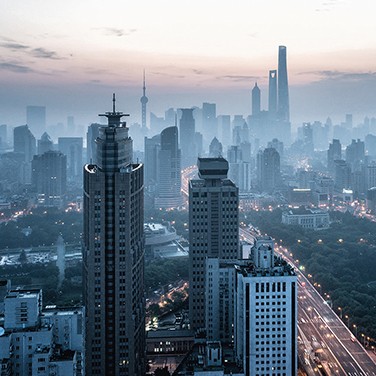Combating Air Pollution May Actually Cause Health Problems
By Ralph Birch
By attempting to reduce one type of air pollution, some urban areas may actually be promoting the growth of another more harmful variety of pollutant.
Many cities around the world are in violation of the World Health Organization guidelines regarding particulate matter with a maximum diameter of 2.5 micrometers (PM2.5). Vehicle emissions are a common source of this type of pollution.
But simply reducing the levels of PM2.5 pollution may not be enough to improve the quality of urban air. A team of U.S. and Chinese scientists found that PM2.5 plays a part in suppressing the formation of another type of pollution known as ultrafine particles.
Defining Ultrafine
Ultrafine particles have a diameter of under 50 nanometers and recent studies have linked them to a variety of health concerns including birth defects.
The latest research provides more information about how ultrafine particles form in real-world situations. While most of the previous work with ultrafine particles was based in the lab, scientists attempted to capture the complex chemistry of the air by testing near a road in Beijing. They also performed air quality tests in an enclosed chamber with a car running.
Testing found that high concentrations of PM2.5 in polluted air actually suppress the formation of ultrafine particles. This occurs because larger PM2.5 particles capture the ultrafine particles as they form.
Scientists also determined that the creation of ultrafine particles is caused by another pollutant released by cars, known as volatile organic compounds (VOCs).
"Testing found that high concentrations of PM2.5 in polluted air actually suppress the formation of ultrafine particles."
The Results
The outcome of the testing points to the need for simultaneously cutting both PM2.5 and VOCs from vehicle emissions. Failing to do this will likely make ultrafine particle pollution worse, researchers say.
“I’ve said before that great care is needed to avoid inadvertently worsening the situation by reducing the mass of airborne particulate matter, only to increase the numbers and toxicity of ultrafine particles as a result,” said Barbara Maher of Lancaster University in England, who was not involved in the study.
These results don’t mean that cities with a PM2.5 problem should stop working toward a solution.
“I don’t think anything here fundamentally changes the imperative to reduce PM2.5 as a high policy priority,” said Alastair Lewis of the University of York in England.
Bigger Cities, More Pollution
The balancing act of cutting PM2.5s without encouraging the production of ultrafine particles is a bigger problem for large cities like Delhi, India. The Indian capital has much higher PM2.5 levels than smaller, less populated cities around the globe.
London, for example, primarily has an issue with nitrogen dioxide pollution in the air, which has been found to have no bearing on the level of ultrafine particles.
Stopping the use of petroleum and diesel fuels entirely would cut both PM2.5 and VOCs that help ultrafine particles flourish.
“Electric cars will definitely help,” said Renyi Zhang, a Texas A&M University scientist who was part of the combined U.S. and Chinese research team.
But the mere existence of electric cars isn’t enough to make a dent in the ultrafine particle statistics. Currently, electric cars account for less than 0.5 percent of the more than one billion cars worldwide, but even electric cars emit some PM2.5s from their tires and brake pads.
Despite these recent findings, more research is needed to determine the best course of action to limit both PM2.5s and ultrafine particles in urban areas going forward.
